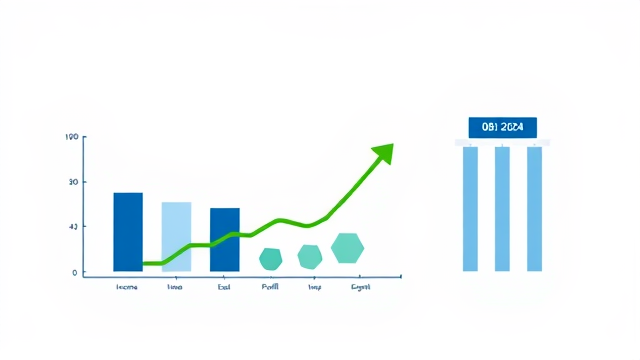经济学人双语 近视已成为一种流行病
What to do about myopia
Short-sightedness has become an epidemic
To fight it, schools should send their students outside
近视已成为一种流行病
为了对抗近视,学校应该让学生到户外活动

Few things come with no downsides at all. Rich countries have almost completely banished infectious diseases such as tuberculosis, cholera and malaria. Instead, their health ministries spend much of their time worrying about illnesses caused by wealth. Cheap, calorie-dense food has abolished starvation in the rich world, but it also encourages diabetes. Sedentary, white-collar jobs are less arduous (and less lethal) than manual work. They also promote obesity and heart disease.
很少有东西是完全没有坏处的。富裕国家几乎已经完全驱逐了结核病、霍乱和疟疾等传染病。相反,他们的卫生部门把大部分时间花在了担心由财富引起的疾病上。廉价的、高热量的食物在富足的世界里废除了饥饿,但它也鼓励了糖尿病。久坐不动的白领工作比体力劳动不那么辛苦(也不那么致命)。它们也促进了肥胖和心脏病的发生。
Even education is not always an unalloyed good. Over the past few decades, East Asia has seen a stunning rise in the rate of short-sightedness. And a growing pile of evidence suggests that the main underlying reason for this is education—specifically, the fact that children spend large parts of the day in comparatively dimly lit classrooms.
即使是教育,也不一定是不折不扣的好事。在过去的几十年里,东亚的近视率出现了惊人的增长。越来越多的证据表明,造成这种情况的主要根本原因是教育,特别是儿童每天大部分时间都在光线相对较暗的教室里度过的事实。
Before the long economic booms that began in the 1960s, myopia was uncommon in East Asia. These days, among the young, it is almost ubiquitous. In Hong Kong, Singapore and Taipei more than 80% of school-leavers are short-sighted. In Seoul over nine in ten young men are. China, which began its economic rise later, is catching up. Data from as far afield as Guangzhou in the south and Inner Mongolia in the north show myopia rates among young people of about 80%.
在20世纪60年代开始的长期经济繁荣之前,近视在东亚是不常见的。如今,在年轻人中,近视几乎无处不在。在香港、新加坡和台北,超过80%的离校生是近视。在首尔,每十个年轻人中就有九个是近视。中国的经济崛起起步较晚,但正在迎头赶上。远在南方的广州和北方的内蒙古的数据显示,年轻人的近视率约为80%。
If East Asia is the centre of the epidemic, the West is not immune. Good data are harder to come by. But studies suggest rates of between 20% and 40% in Europe, an order of magnitude higher than the natural state of affairs. One study in California found a rate of 59% among 17- to 19-year-olds.
如果东亚是该流行病的中心,西方也不能幸免。好的数据更难得到。但研究表明,欧洲的比率在20%至40%之间,比自然状态高一个数量级。加利福尼亚州的一项研究发现,17至19岁的人中有59%的比例。
There are, admittedly, worse things to suffer from. But short-sightedness is not always benign. Glasses and contact lenses are an expensive, lifelong hassle. In parts of rural China, where some families cannot afford either, children struggle in the very schools that are causing the problem. And severe myopia predisposes those enduring it to other eye diseases in middle age, some of which can cause untreatable loss of vision. Governments in Asia are increasingly worried about the public-health implications of entire generations growing up short-sighted. Those in other parts of the world should start worrying, too.
诚然,有一些更糟糕的事情可以忍受。但近视并不总是良性的。眼镜和隐形眼镜是一种昂贵的、终生的麻烦。在中国的部分农村地区,一些家庭买不起这两种东西,孩子们在造成这一问题的学校里挣扎。而且,严重的近视使那些忍受近视的人在中年时容易患上其他眼疾,其中一些会导致无法治疗的视力丧失。亚洲各国政府越来越担心整整几代人在近视中成长所带来的公共健康问题。世界上其他地区的政府也应该开始担心了。
The evidence suggests that regular exposure to bright daylight is vital in properly controlling the growth of children's eyes. Too little light leads to elongated, short-sighted eyes. Researchers think that this explains why rates are so high in Asia, where a strong cultural emphasis on the value of education leads to long school days and, often, private tutoring in the afternoon and evening. That leaves little time for sunshine. Western children, whose parents are increasingly worried by a hyper-competitive jobs market that threatens much less secure employment than they enjoyed, are beginning to go the same way.
证据表明,经常接触明亮的日光对适当控制儿童的眼睛生长至关重要。光线太少会导致眼睛变长、近视。研究人员认为,这解释了为什么亚洲的近视率如此之高,因为那里的文化非常强调教育的价值,导致上学时间很长,而且往往在下午和晚上还要进行私人辅导。这使得他们没有时间享受阳光。西方的孩子,他们的父母越来越担心一个竞争激烈的就业市场,这个市场威胁到比他们享有的更不安全的工作,他们开始走同样的路。
Special eyedrops, as well as clever glasses and contact lenses, may be able to slow the progression of myopia once it has started. But prevention is better than mitigation, and the science suggests a cheap, straightforward measure. A series of encouraging trials, many conducted in Taiwan, show that giving schoolchildren—and especially those in primary education—more time outside can cut the number who go on to develop myopia. An island-wide policy of doing just that seems to have begun reversing the decades-long rise in myopia rates. Similar attempts in Singapore relied on parents, who proved more reluctant to change their behaviour, perhaps worried that other parents might not follow suit, leaving their children at a disadvantage in the classroom.
特殊的眼药水,以及聪明的眼镜和隐形眼镜,也许能够在近视开始后减缓它的发展。但预防胜于缓解,科学表明有一种廉价、直接的措施。一系列令人鼓舞的试验,其中许多是在台湾进行的,表明给学龄儿童--特别是那些接受小学教育的儿童--更多的户外活动时间可以减少后来发展成近视的人数。一项在全岛范围内实施的政策似乎已经开始扭转几十年来近视率的上升。新加坡的类似尝试依赖于父母,而事实证明他们更不愿意改变自己的行为,也许他们担心其他父母可能不会效仿,从而使他们的孩子在课堂上处于不利地位。
Governments are well placed to solve such collective-action problems, while reassuring anxious parents that a bit less classroom time is unlikely to be catastrophic. After all, countries such as Finland and Sweden do well in global education rankings with a less intense approach to education. Giving more outdoor time to young children would still leave room for them to cram for exams in their teenage years. And longer breaks in the playground may also make a dent in other rich-world problems such as childhood obesity. Far-sighted governments should send the kids outdoors.
政府有能力解决这样的集体行动问题,同时向焦虑的父母保证,少一点课堂时间不太可能是灾难性的。毕竟,芬兰和瑞典等国家在全球教育排名中,以较少的教育方式做得很好。给予幼儿更多的户外活动时间,仍然可以为他们在十几岁时补习考试留出空间。而在操场上延长休息时间,也可能对其他富裕世界的问题(如儿童肥胖症)起到一定的作用。有远见的政府应该让孩子们到户外活动。






















评论